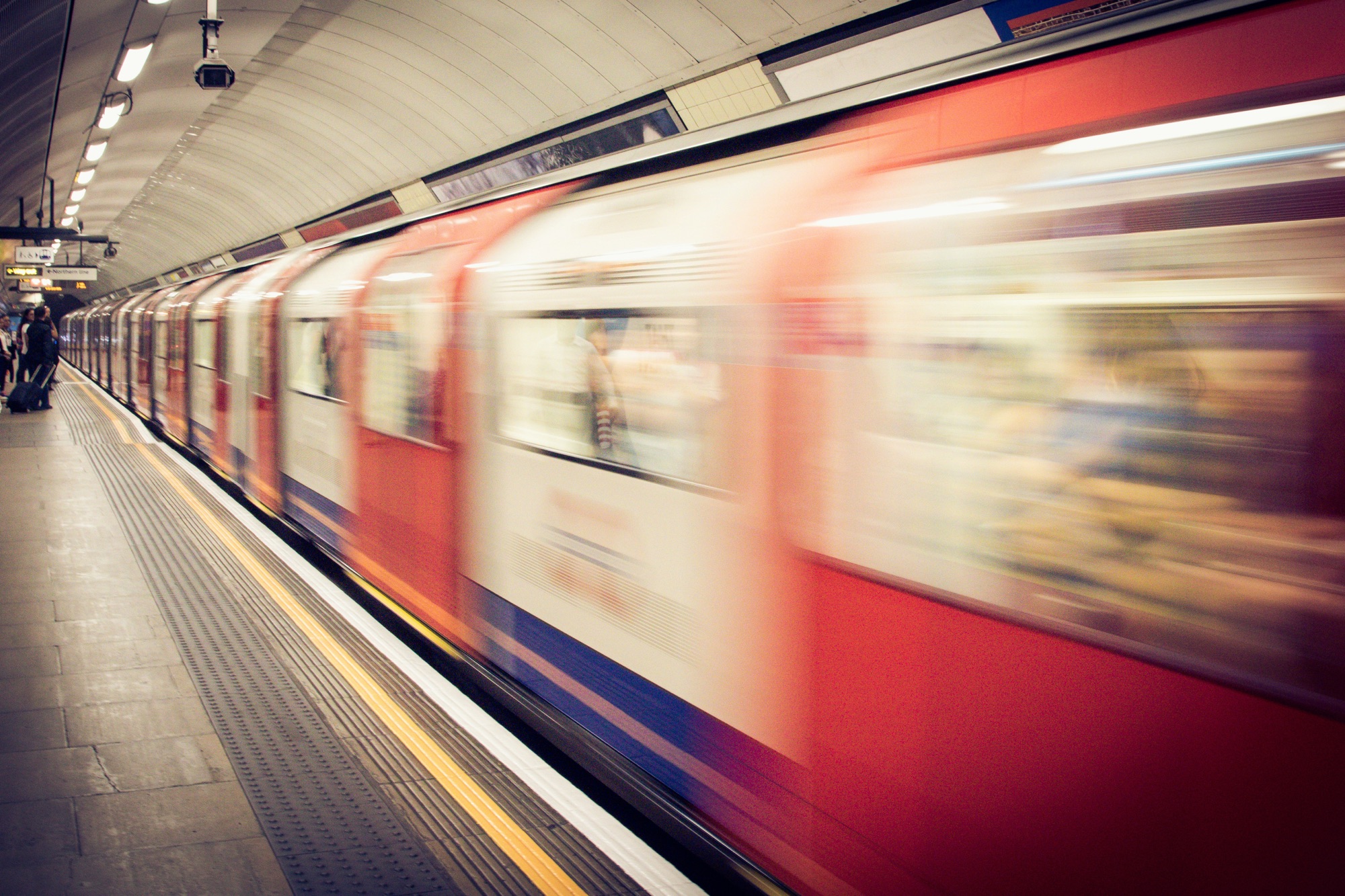The United States, a nation with vast land and diverse modes of transportation, is often noted for its scarcity of passenger trains compared to other developed countries. While countries like Japan, Germany, and France boast extensive high-speed rail networks, the U.S. lags behind in passenger rail infrastructure. The question arises: why does the U.S., a country known for its innovation and infrastructure, have so few passenger trains? The answer lies in a complex blend of historical, economic, political, and cultural factors that have shaped the country’s transportation landscape.
The Rise of the Automobile Industry
One of the primary reasons the U.S. has so few passenger trains is the country’s deep-rooted car culture. Starting in the early 20th century, the mass production of automobiles, led by companies like Ford, revolutionized transportation. Cars quickly became symbols of freedom and mobility, leading to widespread car ownership. This shift in preference diminished the demand for passenger trains, as people increasingly relied on personal vehicles for commuting and long-distance travel.
Key Points:
- The Model T Revolution: The introduction of the Model T by Ford made car ownership affordable for the average American. Its impact was transformative, as it allowed families to travel with unprecedented freedom.
- Suburban Expansion: In the post-World War II era, the American dream evolved to include a home in the suburbs. These areas were designed with cars in mind, with sprawling road networks and minimal access to rail services.
- Highways Over Railways: The federal focus on developing highways reduced the need for trains. Many smaller towns that had once relied on railroads for connectivity found themselves bypassed by the new highway systems.
Investment in Highways and Aviation
The U.S. government has historically prioritized highway and air travel over rail travel. The 1956 Federal-Aid Highway Act, which created the Interstate Highway System, was a landmark moment in American transportation. This extensive network of highways made car travel convenient and efficient, reducing the need for long-distance passenger trains. Similarly, the aviation industry saw significant investment and growth, offering faster travel options over long distances.
Key Points:
- Interstate Highway System: Consisting of over 48,000 miles of roadways, it facilitated economic growth and mobility, connecting cities and states like never before.
- Federal Subsidies for Aviation: The development of airports and air travel received significant federal support, making flying an attractive option for long-distance travel.
- Suburban Sprawl: The highways encouraged the growth of suburbs, areas inherently designed for car travel, further decreasing the reliance on trains.
Decline of Private Railroads
In the early 20th century, passenger trains were operated by private railroad companies. However, as automobiles and planes became more popular, passenger rail service became unprofitable. Railroads began to focus more on freight, where they could maintain profitability, and gradually phased out their passenger services. By the 1970s, many railroads were struggling to maintain their passenger routes, leading to the creation of Amtrak, a government-backed entity meant to preserve intercity passenger rail.
Key Points:
- Shift to Freight: Freight rail became more profitable, leading companies to prioritize it over passenger service. This shift was driven by the efficiency and high demand for goods transportation.
- Ridership Decline: The decline in ridership made it difficult to sustain passenger routes, as fewer passengers meant less revenue.
- Amtrak’s Challenges: Established in 1971, Amtrak has faced chronic underfunding and limited expansion, struggling to compete with other modes of transport.
Lack of Political Will and Funding
In contrast to countries that have invested heavily in high-speed rail, the U.S. has lacked consistent political support and funding for passenger rail development. Rail infrastructure requires significant upfront investment, and without strong political backing, it has been difficult to secure the funds needed to develop extensive rail networks. Additionally, powerful lobbying groups, such as those from the automotive and airline industries, have historically opposed large-scale investment in passenger trains.
Key Points:
- Political Resistance: High-speed rail projects have been proposed but often face political resistance and budget cuts, as evidenced by the challenges faced by California’s high-speed rail initiative.
- Influence of Lobbying: Lobbying from automobile, airline, and oil industries continues to influence transportation policies, often to the detriment of rail investment.
- Funding Bias: Federal and state funding tends to favor highways and aviation over rail infrastructure, creating an uneven playing field for passenger trains.
Geographic and Cultural Factors
The U.S. is a vast country with diverse geographic regions, making it more challenging to build and maintain a comprehensive passenger rail network. Unlike smaller, densely populated countries where rail travel is efficient, the U.S. has large stretches of sparsely populated land where demand for passenger trains is low. Additionally, the American cultural emphasis on individualism and freedom has made car ownership more appealing than relying on public transportation.
Key Points:
- Regional Differences: The U.S. has significant regional differences in population density and transportation needs. While the Northeast has seen some success with rail, vast rural areas remain underserved.
- Economic Viability: Rural areas have low demand for passenger trains, making them economically unviable without substantial subsidies.
- Cultural Preferences: Car ownership is often seen as a symbol of independence and convenience, bolstered by a cultural narrative that values personal mobility.
Competition from Airlines and Buses
In the U.S., air travel and intercity buses offer stiff competition to passenger trains. For long distances, flying is often faster and, thanks to competitive pricing, can be relatively affordable. For shorter trips, bus services like Greyhound or Megabus provide flexible and inexpensive travel options. This competition has made it difficult for passenger trains to capture a significant market share.
Key Points:
- Budget Airlines: These offer quick, affordable travel over long distances, often undercutting the cost and time of train travel.
- Bus Services: Buses provide flexibility and frequent service in regions where trains are scarce, capitalizing on routes that rail cannot efficiently serve.
- Market Share Challenges: Passenger trains struggle to compete in price, speed, and convenience, particularly in areas where alternative transport options are readily available.
Limited High-Speed Rail Development
While countries like Japan and France have invested heavily in high-speed rail, the U.S. has made minimal progress in this area. High-speed rail requires substantial investment in new infrastructure, including dedicated tracks, which the U.S. has largely avoided. Existing rail lines are primarily used for freight, and upgrading them for high-speed passenger trains is both costly and logistically challenging.
Key Points:
- High Costs and Timelines: High-speed rail projects face opposition due to high costs and lengthy timelines, often leading to stalled progress.
- California’s High-Speed Rail: Attempts to develop high-speed rail in California and the Northeast have faced delays and budget overruns, illustrating the complexities involved.
- Infrastructure Challenges: The mixed-use nature of U.S. rail lines (freight and passenger) complicates high-speed rail implementation, as dedicated tracks are necessary for efficient operation.
Fragmented Public Transportation Systems
In many European and Asian countries, passenger rail is integrated into a broader, well-coordinated public transportation network. In the U.S., public transportation is often fragmented, with inconsistent service quality across different regions. This fragmentation discourages the use of passenger trains, as the lack of connectivity between rail, buses, and local transit makes travel less seamless.
Key Points:
- Disconnected Transit Systems: U.S. cities often have disconnected public transit systems, limiting the convenience of rail travel for end-to-end journeys.
- Intermodal Connections: These are crucial for rail travel, but the U.S. lacks comprehensive integration, making it difficult for passengers to transition smoothly from trains to other forms of transit.
- The “Last-Mile” Problem: Getting from a train station to your final destination remains a significant barrier, often requiring additional modes of transport that are not readily available.
The Role of Amtrak Today
Amtrak, the primary provider of intercity passenger rail service in the U.S., continues to face significant challenges. Despite its establishment to maintain a semblance of passenger rail service, it operates under constraints that limit its ability to expand and improve services.
Key Points:
- Funding Limitations: Amtrak receives federal funding but often not at the levels required to maintain and expand its services effectively.
- Operational Challenges: Many of Amtrak’s routes are on tracks owned by freight companies, leading to scheduling conflicts and delays.
- Service Innovations: Despite constraints, Amtrak has attempted to innovate with new services, such as upgraded amenities and routes, to attract more passengers.
Potential Solutions and the Future of Passenger Rail
While the challenges are significant, there are potential pathways to revitalizing passenger rail in the U.S. These include policy changes, technological advancements, and shifts in public perception.
Strategies for Improvement:
- Increased Investment: Federal and state governments could prioritize funding for passenger rail infrastructure, similar to the investments seen in roads and aviation.
- Strategic Partnerships: Collaborations with private companies could lead to the development of more efficient and profitable rail services.
- Public Awareness Campaigns: Educating the public on the environmental and economic benefits of rail travel could shift cultural perceptions and increase demand.
Technological Innovations:
- Maglev and Hyperloop: Emerging technologies like magnetic levitation (maglev) and Hyperloop systems present opportunities for faster and more efficient rail travel.
- Energy Efficiency: Modern trains can be more energy-efficient and environmentally friendly, appealing to a growing demographic concerned with sustainability.
Conclusion
The scarcity of passenger trains in the U.S. is a result of a complex interplay of historical choices, economic priorities, cultural preferences, and political factors. The dominance of the automobile, extensive highway systems, underfunding of rail infrastructure, and fierce competition from other modes of transportation have all contributed to the current state of passenger rail. However, with strategic investments, policy shifts, and technological innovations, there remains potential for growth and revitalization of the U.S. passenger rail system. By learning from international examples and adapting to changing transportation needs, the U.S. could yet develop a more robust and integrated passenger rail network that meets the demands of the 21st century.




